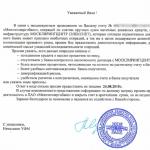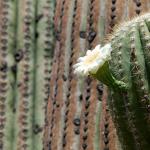Pet owners should know how many times a healthy cat goes to the toilet. Of course, many may experience minor deviations that do not pose a threat to the health of the pet. But if, then this should alert the owners.
Healthy urination: how many times does it happen in cats?
As a general rule, cats should pee 2-3 times a day.
The amount of urine produced per day ranges from 0.05 to 0.2 liters.
Indicators depend on the animal’s age, gender, weight, nutrition and lifestyle. Kittens do not pee as often if they are less than 3 months old.
Kittens
Their normal urination stabilizes only by 1–1.5 months.
Small animals can pee no more than once a day. Already by 3-4 months urination increases up to 2–3 times.
How many times should adult animals go to the toilet?
Differences in urination between adult cats and female cats there are minor ones.
For a cat, the norm is 1–2 times a day, and for cats – 3–4 times.
The differences are associated with the specific structure of the urinary system. Cats have narrower canals, so their urine flow is a little different. A male animal, and castrated, can go to the toilet up to 5 times a day with normal nutrition. Females, including sterilized animals, pee 1 to 3 times a day with normal nutrition.
Safe deviations from the norm
Stress can disrupt a cat's routine.
The animal may occasionally experience deviations from the norm when urinating. The pet can walk small once every 1-2 days. The reason may be:
- stress;
- climate change;
- change of feed;
- carrying out sterilization or castration.
As for sterilization and castration, it takes up to 2-3 days for cats to restore function. Neutered cats take longer days because they undergo deep surgery. The first days after the procedure, they go to the toilet through a catheter.
Pathological deviations from the norm
The genitourinary system of a cat.
If your cat The little one has not gone to the toilet for more than 2 days, or urination is difficult, comes in scanty doses, then the animal should be examined.
Inflammatory processes in the body can be accompanied by the following symptoms:
- lack of urination;
- difficulty urinating with scanty discharge;
- it is painful for the animal to go to the toilet, which is expressed by frequent meowing;
- the presence of various impurities in the urine (blood, mucus, sand);
- apathy, bad mood;
- lack of appetite;
- elevated temperature;
- general poor health (hot tips of the ears, pale and unhealthy-looking gums);
- swelling in the abdominal area.
Video about acute urinary retention in a cat
Urolithiasis
Symptoms of urolithiasis.
They often occur due to hypothermia, as well as poor nutrition, cheap feed, and poor animal hygiene. They affect cats more, both regular and neutered, due to the specific structure of the genitourinary system.
If the animal has no desire to go to the toilet for more than two days, the pet does not feel well, its stomach is swollen, or there are any impurities in the urine, then contact your veterinarian immediately . If the disease progresses, surgery may be required.
Prevention of urolithiasis and diseases associated with the kidneys and genitourinary system
Don't forget to change the water in your cat's bowl.
To protect your pet from urinary problems, owners should:
- feed your cat or cat in a balanced manner (2-3 times a day);
- give clean water;
- include in the diet not only dry food, but also canned food, boiled chicken, meat, fish (no more than once a week), dairy products, cereals;
- wash the tray thoroughly;
- keep the house clean;
- do not allow the animal to become hypothermic;
- notice changes in your pet’s behavior in time and contact a veterinarian.
The health of cats depends primarily on their diet. As a rule, kidney and bladder diseases often occur in overweight cats.
In addition, food also influences the occurrence of pathologies. It is not recommended to give dry food frequently. Veterinarians advise. If your pet already suffers from urolithiasis, then it is necessary to include appropriate food in its diet.
A good owner constantly monitors the health of his pet. He will pay attention in time to the fact that the cat does not pee or visits the litter box once a day, excreting urine literally in droplets. Of course, if the animal is free-range, it may not do its “business” at home.
This will complicate the diagnosis, because you can easily miss signs of chronic renal failure or other symptoms of dysfunction of the urinary system. However, if there is even a suspicion that the cat is not passing urine, or there are other problems with the urinary tract, only a timely visit to the veterinarian can solve the problem, and in some cases, save the animal’s life.
Normal frequency of urination in cats
Those who have just bought themselves a mustachioed and striped friend often ask how many times a day a cat should pee. These animals initially existed with a lack of moisture, so they drink little, and their urine is extremely concentrated. Actually, this is what causes the specific and well-recognized smell of cat urine.
There is no need to be alarmed if your cat does not pee several times a day; it may happen once or twice a day. In principle, this is within normal limits, especially if the animal receives wet food and drinks very rarely and little.
This primarily applies to small kittens. Their urine is separated in minute quantities due to the fact that they feed on liquid food - mother's milk, which is almost completely absorbed by the kitten.
In addition, a caring cat constantly licks her kittens, so it may seem as if they are not urinating at all. Only after children begin to feed themselves can owners notice that they go to the toilet infrequently. This is also the norm for animals up to one and a half to two months.
It’s another matter if owners notice urinary problems in older animals. Normally, they can urinate 1 to 2 times a day. Frequent urination may indicate the presence of chronic renal failure (CRF), and too infrequent urination may indicate various health problems, including urolithiasis, which is very dangerous for cats.
Causes of urinary problems
There are many reasons why a cat does not pee as it should, so diagnosing the disease is very important. Only after receiving accurate results can the doctor prescribe the correct treatment.

The most common causes of difficulty urinating are:
- Kidney diseases. There are quite a few of them, they can be congenital or acquired, appear as a result of injury or disease.
- Urolithiasis disease. This is the most common and dangerous cause of urinary obstruction.
- , or inflammation of the bladder and urethra. Occurs during infection or as a consequence of hypothermia against the background of a decrease in immunity.
- Atony of the bladder, appearing after injury, surgery, as a result of illness or old age.
- Anuria (lack of urine) is a critical condition, often leading to the death of the animal.
- Complications on the kidneys after infectious or systemic diseases.
- Spinal injuries with.
- Formation of tumors (benign or malignant).
The mother cat closely monitors the toilet of a newborn kitten, carefully licking it and keeping it clean. With the arrival of a small kitten in the house, the responsibility for monitoring the proper functioning of its digestive system falls on the owner.
Their future health depends on how often kittens go to. To help the pet develop healthy, it is useful for the owner to know why bowel problems occur, how many times month-old kittens should go to the toilet, and what to do if the kitten does not go to the toilet for a long time.
Toilet for newborn kittens
A mother cat helps a newborn kitten go to the toilet in the first three weeks of its life. A cat, licking its cubs, not only cleanses them of dirt and foreign odors, but also stimulates blood circulation in the digestive organs.
Thanks to this massage, it is easier for the kitten to get rid of gases and empty itself. The cat licks off all the dirt, leaving the appearance that the kitten does not go to the toilet at all.
If for some reason the cat does not know how to provide proper care to the kitten, you can help him yourself. In a situation where the kitten does not want to go to bed for several days, and in order to eliminate the consequences of a bloated abdomen from gases, certain actions need to be taken.
Using a soft brush or cotton wool moistened with warm water, gently massage the kitten's belly in a clockwise direction in a circular motion. Additionally, a soft massage is performed in the direction from head to tail, with longitudinal movements.
Toilet for one-month-old kittens
Upon reaching three weeks of age, the kitten’s intestines are already sufficiently populated with beneficial microflora, formed and ready to accept adult food. At this age, the kitten still eats mother's milk with gradual complementary feeding in the form of liquid food or creamy food. This food does not injure the intestines and does not require too thorough chewing.
At three weeks of age, a kitten should go to the toilet approximately 3 to 6 times daily. Normally, a kitten's feces should be mushy, uniform and thick. They should not contain impurities in the form of mucus or undigested food elements. The kitten itself should be cheerful, and its belly should be soft to the touch and painless. An unfavorable sign for the owner is kitten feces that are too dry or too runny.
If the kitten does not have stool for 3 or 4 days, you need to carefully analyze the pet’s diet. Abdominal massage, microenemas, and a small amount of vegetable oil can help.

Toilet for adult kittens
The kitten is transferred to adult food from the age of 1 to 3 months. In general, coca feces become more shaped. The number of visits to the toilet, as well as the consistency of feces, depend on the type of food the kitten eats. When eating food with a lot of fiber, the number of bowel movements will be greater than with high-protein food.
A grown kitten goes to the toilet almost every day, and its feces should be free of blood, mucus, and undigested food. The owner should be wary of the fact that the pet often goes to the toilet with very liquid feces.
Additional information on the topic of a kitten visiting the toilet can be found in the following video:
How often should a kitten pee?
When answering the question of how often a kitten should pee, you need to take into account the amount of liquid it consumes. The amount of urine should be equal to the volume of liquid drunk. A very small kitten has a small bladder capacity and will pee more frequently than an adult.
On average, a kitten goes to the toilet up to 10 times a day. An older kitten will have to go to the toilet up to 5 times a day. An adult cat goes small no more than 3-4 times a day.
The process of urination itself is normal and should not cause discomfort to the kitten. It is worth paying attention to the quality and color of urine, its transparency, the presence of impurities in the form of blood and mucus.
Signs that a kitten wants to go to the toilet:
- The kitten scratches the floor or objects with its paws.
- The kitten often sniffs objects around, as if looking for a suitable place. Cats often go to the toilet in quiet, secluded places, which the kitten will try to find in the house.
- The kitten marks time, sits down, squeaks.
- If a kitten is thinking about going to the toilet, its eyes become glassy. In such cases, you need to transfer it to the tray as quickly as possible.
 |
 |
 |
 |
|
|
|---|
Why does a kitten have problems with stool?
Stress has affected bowel function. A kitten may refuse to go to the toilet due to worries about moving to a new home, changing its owner, or being separated from its mother. To help the kitten get comfortable in a new place, you should protect it from noise, sudden movements, and games with children. The kitten itself must begin to play in the new territory, run, and go to the toilet. If the kitten does not defecate within 5 days, you should contact a veterinarian.
Due to poor nutrition, the functioning of the digestive system is disrupted. In a new home, the kitten must adhere to the diet of its old owners for some time, with a gradual addition of new food. When choosing ready-made food, you should pay attention to special diets for kittens.
If a kitten does not walk for more than 5 days, even having gotten used to a new place and food, then constipation may be the cause of problems with stool. By feeling your pet's abdomen, you can determine the presence of bloating, which usually accompanies constipation.
A sign of constipation is the painful process of defecation in your pet. Signs of constipation are also: sitting on the tray for a long time, plaintive meowing.
How to deal with constipation in a kitten yourself
If your pet feels well enough, you can try to cope with your kitten’s constipation yourself with the help of:
- Oils: If the kitten does not go to the toilet for several days, you can give simple vegetable oil in an amount of no more than half a teaspoon per day. You can introduce it into the mouth using an ordinary syringe without a needle, slowly so that the kitten does not choke. Vaseline oil is also effective for constipation. It can be added at each feeding, 0.5 ml, in combination with a gentle therapeutic massage.
- Soap: you need to make a small peg from baby soap and insert it into the anus. Before administration, the soap should be moistened in warm water. It is more convenient to carry out this action while the pet is sleeping. After it, within a few hours, the kitten should successfully go to the toilet for the most part.
- Medicines: You should consult your veterinarian about the appropriateness and correct use of medications.
- Enema: The enema procedure at home is carried out only in full confidence that it is harmless to the kitten. This procedure is relatively safe only if the cause of constipation is precisely inappropriate nutrition, and not intestinal obstruction or volvulus. There is a list of conditions for which an enema is strictly contraindicated: inflammatory processes in the intestines, bleeding, rectal prolapse, acute pathologies of the abdominal organs, inflammatory processes in the intestines.
Do-it-yourself enema of a kitten
To do an enema yourself, you will need a 10-milligram syringe, warm boiled water, Vaseline or oil. It is advisable to do the procedure with an assistant: one will hold the kitten, and the second will slowly insert a syringe pre-lubricated (with Vaseline or oil), deep enough so that the liquid is distributed as intended.
During the procedure, you need to slowly introduce water, gently palpating the pet's stomach to ensure that the intestines are sufficiently full. For a kitten, 50-100 ml of water is enough for the procedure.
General information about the kitten's toilet
A kitten can go to the toilet anywhere from 10 times a day (in the early stages) to 5 times a day as it grows. If the kitten goes to the toilet too infrequently (up to 4 times a day), or goes to the toilet too often, or has other warning signs (blood, mucus in the urine), the owner should immediately contact a veterinarian.
On average, one-month-old kittens poop on their own 3 to 6 times a day. A kitten in a new place often does not go to the toilet for up to 5 days. If, after adaptation to the new place, the situation does not change, measures need to be taken.
The answer to the question of how often to change the tray depends on the composition. In general, after each visit to the litter box by a kitten, there should be no traces or smell left in it, otherwise the kitten will try to find another secluded place to relieve itself.
Every caring owner should know how often a healthy cat can go to the toilet. Some animals experience abnormalities when urinating. Some situations can be quite serious and indicate a threat to the pet’s life. Therefore, any deviations in this process are an alarming signal.
Healthy urinary parameters of cats and kittens
The average daily volume of urine excreted in cats can vary from 50 to 200 ml. The figure depends on many indicators:
- nutrition;
- number of years lived.
For example, if a kitten has not reached the age of 3 months, then its trips to the toilet will be very rare. Small cats and female cats pee once a day. At 3–4 months, kittens pee 2–3 times a day.
If a kitten under 4 months pees once a day, don’t worry, this is normal.
Cats and cats
The urination of adult cats and male cats differs, but only slightly. This is influenced by the specific structure of the urinary system of females and males. Males have a narrower and longer urethra than cats, so their urinary outflow is somewhat different. It doesn’t matter whether the cat is an ordinary cat or neutered, urination occurs up to five times a day, provided it is well fed. Females, even sterilized ones, pee one to three times a day under normal nutrition conditions.
Deviations
Over the course of each animal's life, some abnormalities in urination may occur. At the same time, there are safe cases, and there are pathological ones that require treatment.
Safe Deviations
Rare abnormalities may occur when urinating in cats. At this time, the animal can pee no more than once every few days, while urination disturbances are caused by external factors and are not indicators of the animal’s ill health. This may be due to:

As for the last point, in order to recover, the cat will need up to three days. With cats it's a little more complicated. In females, recovery takes up to 5–7 days. This is because their operation is abdominal and affects deeply located organs and tissues.
Ideally, after surgery, the cat should pee through the catheter. But in reality, animals are often discharged home after they have recovered from anesthesia and the doctor is convinced that they are in adequate health.
Deviations associated with pathology
If a cat is unable to urinate for more than two days, suffers from difficulty passing urine, or urine comes out in tiny doses, then the animal must be carefully examined.
Perhaps the pet is suffering from an inflammatory process in the organs of the genitourinary system. Its symptoms may include the following conditions:

Frequent urination in a cat
Unnaturally frequent urination in cats (pollakiuria) occurs due to increased sensitivity of the bladder walls. Even minimal fullness of the organ leads to urge. Irritation can be caused by a number of reasons:

If a pet often visits the litter box, and the owner does not understand why this is happening, then you should definitely visit a veterinarian to find out the reasons. Frequent urination does not always signal that your pet is sick with something, but it is best to make sure of this by conducting a diagnosis so that timely help can be provided.
Throughout my life, cats have appeared in my house several times. All were street children and were taken into the house from critical conditions (thrown in the trash, freezing in winter). Not a single animal, regardless of age, peed during the first 24 hours. After the seals recovered from the shock (warmed up, ate, washed, slept), they first walked around the territory and got acquainted with the new possessions, and only after at least a day they peed and began to lick themselves.
Video: Frequent urination in cats
Difficulty urinating in a cat
Any problems that can lead to difficulty urinating are divided into two groups:
- pathologies of the bladder;
- urinary tract diseases.
If we talk about female cats, then problems with difficulty excreting urine are associated precisely with the second group of pathologies.
Old and neutered cats often suffer from complete blockage of the urethra. This is facilitated by uric acid salts, the excess of which is deposited in the kidneys in the form of stones. This usually happens if the animal consumes a lot of raw fish during its life (the general belief that this is an excellent food for cats is wrong).
Pathologies associated with the lower parts of the urinary system have common symptoms:

The cause must be found as quickly as possible so that it can be eliminated quickly.
It is believed that 75% of cases of poor urine flow and scanty discharge occur due to cystitis.
Acute urinary retention
Acute urinary retention is a condition in which the animal does not urinate for 24 hours. It is dangerous and life-threatening for the pet. As a result of excessive overfilling, the bladder may rupture, causing urine to leak into the abdominal cavity. Intoxication of the body occurs, and then the death of the pet occurs.
Acute urinary retention is more often detected in cats, but in cats it is classified as an infrequent pathology.
The cause of this dangerous pathology is most often stones that block the outflow of urine. However, there are a number of other factors that experts highlight:
- Obstruction (blocking) of the urethra with a blood clot or mucus, pus. Often occurs in cats that have had a trauma to the penis or a disease associated with an infectious carrier that has affected the specified organ. This can also be caused by a bladder infection.
- Kidney dysfunction. The animal's body becomes unable to excrete even a minimal amount of urine. This may be due to organ perforation or tumor.
- Spinal injury or infection that has penetrated the spinal cord. In this case, the innervation of the urinary and urinary organs may be disrupted, which is why the animal stops urinating.
Acute urinary retention requires immediate medical attention. There they can do:

My cat has had her bladder catheterized several times. But the problem could not be solved in this way. The outflow of urine was hampered by the appearance of a tumor. We agreed to the operation, but, unfortunately, the cat did not survive it; she was already an elderly lady.
Video: acute urinary retention in cats
How to avoid urinary problems
Every owner of a cat should be aware that if the animal once gets a similar illness, it will be quite difficult to get rid of it. In order for your pet to feel comfortable and lead a full life, it is necessary to take a number of preventive measures and periodically visit the veterinarian. You can prevent possible abnormalities when urinating by following some tips:
- The animal must be vaccinated on time to reduce the risk of developing infectious diseases in the body.
- The pet should not be overcooled.
- The water must be clean and fresh. In addition, the animal must have unlimited access to fluids.
- The diet must exclude prohibited foods and must be compiled according to the rules of nutrition for a cat.
- The animal should move a lot, which is facilitated by outdoor games (at least 30 minutes a day).
If problems with urination occur, the animal should be treated by a veterinarian. Prescribing medications on your own can aggravate your pet’s condition and put its life in danger.

















